Red-crowned Crane
Grus japonensis
ENDANGERED
Hokkaido, Japan
Japan, the land of the rising sun is home to some spectacular habitats hosting incredible species of wildlife. I had the opportunity to visit the beautiful island of Hokkaido just before the pandemic hit and spend a few days exploring and photographing the stunning wildlife inhabiting the island. I had two absolutely must have subjects in mind - first, the rarest crane in the world, the Endangered Red-crowned Crane (Grus japonensis), also called the Manchurian crane or Japanese crane and the other was the Blakiston’s Fish Owl (Bubo blakistoni), the largest living species of owl in the world, another Endangered species that lives in some of the hardest-to-reach corners of northeast Asia.
The wildlife of Japan includes its flora, fauna, and natural habitats. The islands of Japan stretch a long distance from north to south and cover a wide range of climatic zones. This results in a high diversity of wildlife despite Japan's isolation from the mainland of Asia. In the north of the country, north of Blakiston's Line, there are many subarctic species which have colonised Japan from the north. In the south there are south-east Asian species, typical of tropical regions. Between these areas lies the temperate zone which shares many species with China and Korea. Japan also has many endemic species that are found nowhere else in the world, making it home to many endangered/rare species.
The island of Hokkaido is one of the best known places in Japan for its scenery and wildlife. In fact, Hokkaido may be one of the best known places for its natural parks and beautiful landscapes because much of the land is still preserved as national parks and in such ideal conditions wildlife and animals can truly thrive. Some of the wildlife one can see in Hokkaido are their Brown Bears, the Hokkaido Red Fox or Ezo Red Fox, the Hokkaido Red Squirrel, a subspecies of the Eurasian Red Squirrel, the Hokkaido Crying Rabbit, a subspecies of the Northern Pika resembling a mouse more than a rabbit, the Yezo Sika Deer indigenous to Hokkaido, the beautiful Iizuma/Least Weasel and the kuroten - another type of weasel, the Shima Enaga/Long-tailed tit and the Ezo momonga, a type of Siberian Flying squirrel found only on Hokkaido and the rare and beautiful Red-crowned Cranes which are the focus of the blog today.
Read about some of the wild birds and animals of Hokkaido I have already written about:
Stellar’s Sea Eagles - one of the most remarkable birds I have seen against a backdrop of extreme landscapes exposed to the incredibly harsh climate during the winter
Swan Lake & Le lac des Cygnes - home to the beautiful Whooper Swans at the breathtaking Lake Kussharo, an inland caldera lake in the western region of Hokkaido, a remnant of a long-ago erupted volcano
Ezo Red Fox or Kitakitsune foraging for food on the frozen waters near the Notsuke Peninsula whose name is derived from the Ainu for jawbone, notkeu, purportedly due to the landform's visual resemblance to that of a whale.
the tenacious and cunning Yezo Sika Deer (Yezoshika)
the elusive Ural Owl
Blakiston’s Fish Owl - the Endangered largest living species of owl
Large-billed & Carrion Crows seen on the drift ice in the Sea of Okhotsk and in other places across the island
Eurasian/ Wood Nuthatch from the Kushiro-shitsugen or Kushiro Wetlands
Red-crowned Crane
The Red-crowned Crane (Grus japonensis), also called the Manchurian crane or Japanese crane (Japanese: 丹頂鶴 or タンチョウヅル; rōmaji: tanchōzuru), is a large East Asian crane among the rarest cranes in the world. In some parts of its range, it is known as a symbol of luck, longevity, and fidelity.
Adult red-crowned cranes are named for a patch of red bare skin on the crown, which becomes brighter during mating season. Overall, they are snow white in color with black on the wing secondaries, which can appear almost like a black tail when the birds are standing, but the real tail feathers are actually white. Males are black on the cheeks, throat, and neck, while females are pearly gray in these spots. The bill is olive green to greenish horn, the legs are slate to grayish black, and the iris is dark brown.
This species is among the largest cranes, typically measuring about 150 to 158 cm (4 ft 11 in to 5 ft 2 in) tall and 101.2–150 cm (3 ft 4 in–4 ft 11 in) in length (from bill to tail tip). Across the large wingspan, the red-crowned crane measures 220–250 cm (7 ft 3 in–8 ft 2 in). Typical body weight can range from 4.8 to 10.5 kg (11 to 23 lb), with males being slightly larger and heavier than females and weight ranging higher just prior to migration. On average, it is the heaviest crane species, although both the sarus and wattled crane can grow taller and exceed this species in linear measurements. On average, adult males from Hokkaidō weighed around 8.2 kg (18 lb) and adult females there averaged around 7.3 kg (16 lb), while a Russian study found males averaged 10 kg (22 lb) and females averaged 8.6 kg (19 lb); in some cases, females could outweigh their mates despite the males' slightly larger average body weight. Another study found the average weight of the species to be 8.9 kg (20 lb).
In the spring and summer, the migratory populations of the red-crowned crane breed in Siberia (E. Russia), N-E China & occasionally in N-eastern Mongolia (i.e., Mongol Daguur Strictly Protected Area). The breeding range centers in Lake Khanka, on the border of China and Russia. Normally, the crane lays two eggs, with only one surviving. Later, in the fall, they migrate in flocks to the Korean Peninsula and east-central China to spend the winter. Vagrants have also been recorded in Taiwan. In addition to the migratory populations, a resident population is found in eastern Hokkaidō in Japan. This species nests in wetlands and rivers. In the wintering range, their habitat is comprised mainly by paddy fields, grassy tidal flats, and mudflats. In the flats, the birds feed on aquatic invertebrates and, in cold, snowy conditions, the birds switch to mainly living on rice gleanings from the paddy fields.
The population of red-crowned cranes in Japan is mostly non-migratory, with the race in Hokkaidō moving only 150 km (93 mi) to its wintering grounds. Only the mainland population experiences a long-distance migration. They leave their wintering grounds in spring by February and are established on territories by April. In fall, they leave their breeding territories in October and November, with the migration fully over by mid-December.
A red-crowned crane pair duets in various situations, helping to establish formation and maintenance of the pair bond, as well as territorial advertisement and agonistic signalling. The pair moves rhythmically until they are standing close, throwing their heads back and letting out a fluting call in unison, often triggering other pairs to start duetting, as well. As it is occurs year around, the social implications of dancing are complex in meaning. However, dancing behaviour is generally thought to show excitement in the species. To strengthen the bond, red-crowned cranes engage in dual honking rituals before performing a dance.
The estimated total population of the species is only 2,750 in the wild, including about 1,000 birds in the resident Japanese population. Of the migratory populations, about 1,000 winter in China (mainly at the Yellow River delta and Yancheng Coastal Wetlands), and the remaining winter in Korea. It received Endangered status on June 2, 1970.
In Japan, this crane is known as the tanchōzuru and is said to live for 1,000 years. A pair of red-crowned cranes was used in the design for the Series D 1000-yen note (reverse side). In the Ainu language, the red-crowned crane is known as sarurun kamuy or "marsh-kamuy". At Tsurui, they are one of the 100 Soundscapes of Japan. Cranes are said to grant favours in return for acts of sacrifice, as in Tsuru no Ongaeshi ("crane's return of a favour").
The population of red-crowned cranes is split into a migratory continental population in Korea, China, Mongolia, and Russia, and a resident Japanese population in Hokkaidō. The estimated total population of the species is only 1,830 in the wild, including about 950 birds in the resident Japanese population. Of the migratory populations, about 400-500 winter in China (mainly at the Yellow River delta and Yancheng Coastal Wetlands), and the remaining 1000-1050 winter in Korea. It received Endangered status on 2 June 1970.
The National Aviary in Pittsburgh ran a program where U.S. zoos donated eggs which were flown to Russia and raised in the Khinganski Nature Reserve and released into the wild. This program sent 150 eggs between 1995 and 2005. The program has been put on hold to concentrate on different crane conservation programs in Russia, such as education and fire suppression. Several hundred red-crowned cranes are kept in zoos around the world. Assuredly, the international efforts of Russia, China, Japan, and Korea are needed to keep the species from extinction. The most pressing threat is habitat destruction, with a general lack of remaining pristine wetland habitats for the species to nest. In Japan, little proper nesting habitat remains and the local breeding population is close to the saturation point.
In South Korea, it has been designated natural monument 202 and a first-class Endangered species.
‡‡‡‡‡
The following three photos were taken at short intervals during golden hour at the Setsuri River where we went around 3am in sub-zero temperatures to get the best position on the bridge at first light. It was a spectacular golden morning but unfortunately the temperatures were not low enough to create the fog rising from the river which would have elevated the mood of the photos. Maybe another time if all goes well.
‡‡‡‡‡
‡‡‡‡‡
The dance of the Tanchōzuru
With wings slightly raised and heads held high, a pair of red-crowned cranes begin to march, their broad, three-toed feet puncturing the snow as they trumpet loudly and steam rises from their beaks. The male calls first, followed closely by the female—several notes in quick succession, strengthening their bond. But this vocal parade is just the prelude. Now the pair begin to dance, bowing heads, flapping wings, leaping up and down and spinning around, sometimes picking up sticks and leaves and tossing them in the air. Their momentum triggers other couples to do the same, then the juveniles join in, until the whole flock is in motion—mesmerising flashes of red, black and white, flickering across the snowfields. It’s a sight worth going a long way to see.
This main body of images below are from the Akan International Crane Center a facility unique to Japan in its purposes to conserve the tancho crane while providing research and information about these magnificent birds. Within the facility are informative displays, and outdoors visitors may observe the tancho cranes being raised in a situation similar to nature throughout the year. From November to March, artificial feeding is carried out at the neighbouring "Branch Tancho Observation Center", with as many as 300 wild tancho cranes visiting on a busy day.
During my time here I had the good fortune to view the cranes at close range and was also lucky to have a brief snowstorm which changed the entire mood of the images not to mention that I was the only one left in the vicinity photographing and documenting these magnificent birds. Some of my “On Location“ photos are shared here.
‡‡‡‡‡
Some of these beautiful photos are available as large Limited Edition FineArt prints on canvas.
The following are some photos are from the Tsurui-ito Tancho sanctuary established by Wild Bird Society of Japan (WBSJ) in 1987. For effective conservation of red-crowned cranes and their habitat in Japan, a working group of specialists from conservation organisations and ornithologists in Japan and from overseas was formed in 1986. The working group made a recommendation to establish a sanctuary in the village of Tsurui in eastern Hokkaido. Yoshitaka Ito, dairy farmer, had been one of designated care givers for the cranes and feeding them, and Mr. Ito agreed to establish the sanctuary on his property. Establishment of the sanctuary was made possible by contribution from WBSJ and donations from other donors around the world.
The village of Tsurui is located near the Kushiro Wetland, the largest wetland remaining in Japan, and the north-western portion of the wetland is within the municipal boundary of the village. Dairy is the main industry in the region, and, aside from the wetland, the landscape is dominated by pastures dotted with dairy farms and hills covered in trees. The sanctuary is about a 50 minute drive from Kushiro Tancho Airport and about 1 hour by bus from Kushiro, the nearest city which was our base camp while we photographed these spectacular cranes.
The sanctuary has an area of about 13 ha, and it is used as a way field in summer. North and east sides of the sanctuary is bordered by Setsuri River with the riparian woodland of Japanese oak (Quercus mongolica ver. crispula), willows (Salix spp.) and other species of trees and shrubs. There is a dairy farm to the south, and the residential area of the village is located to the west.
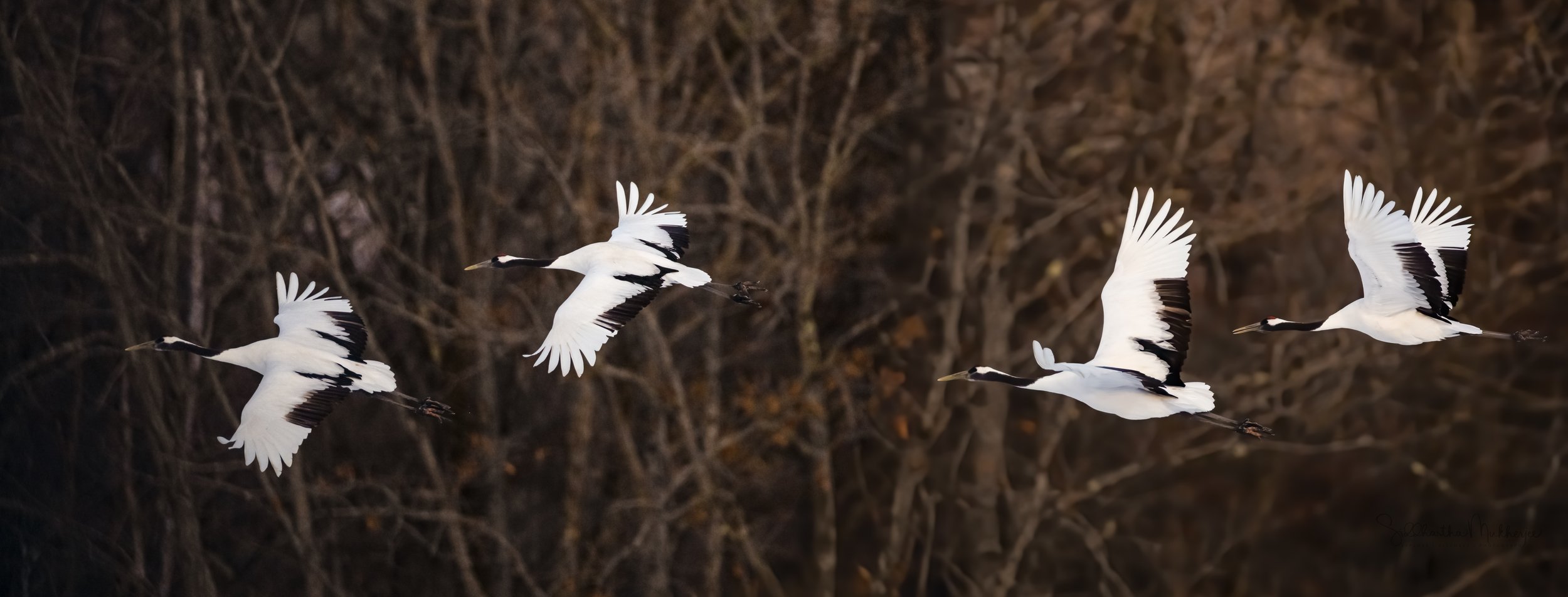
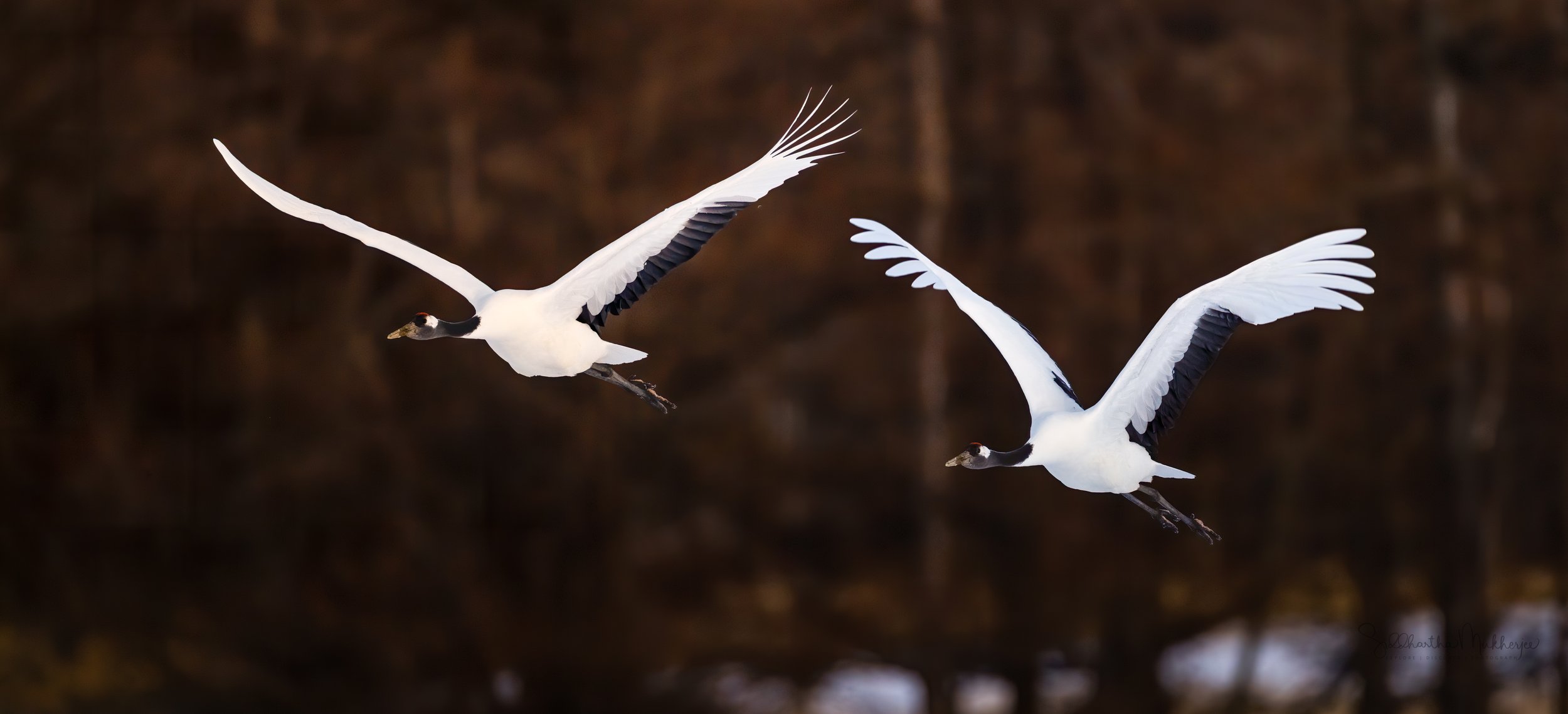

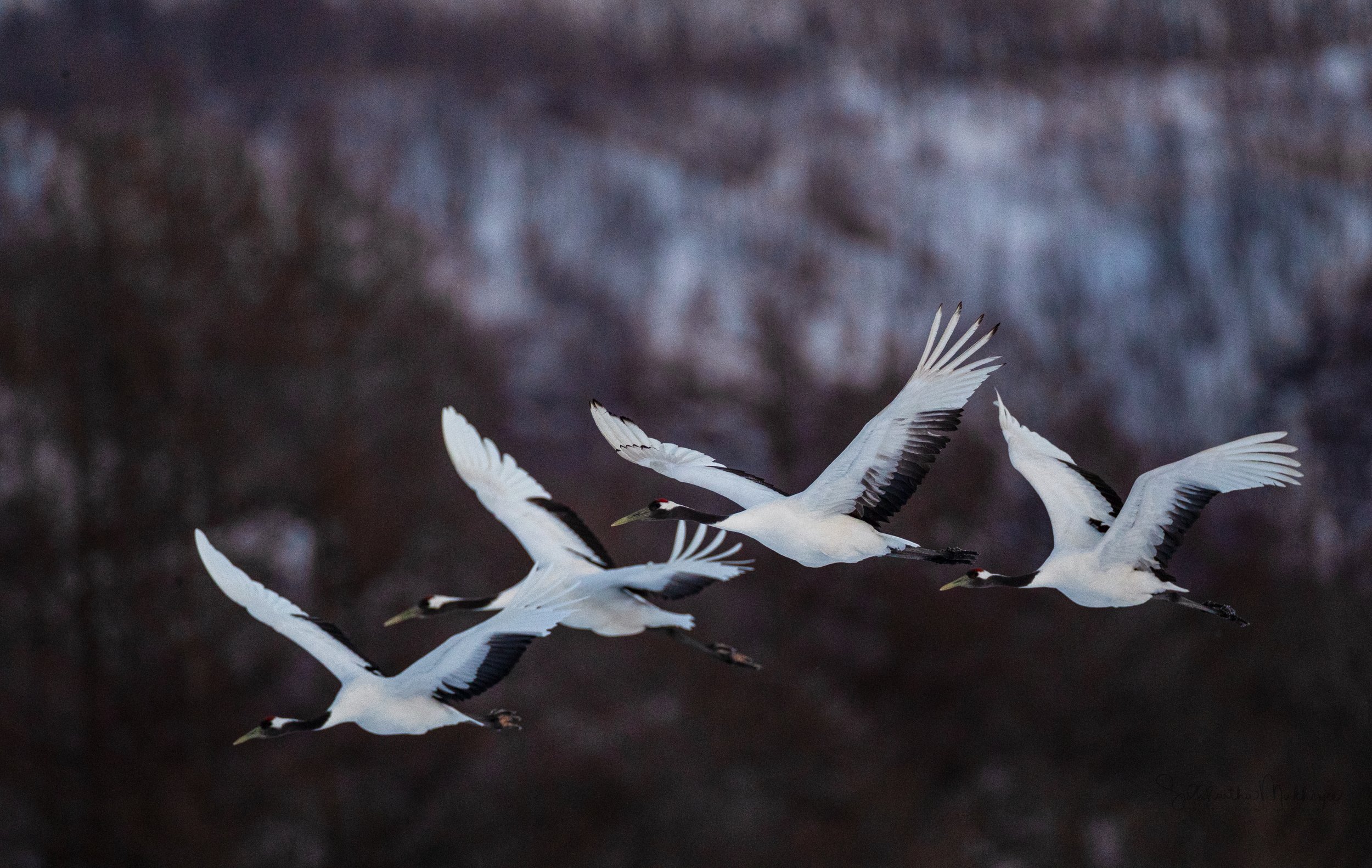
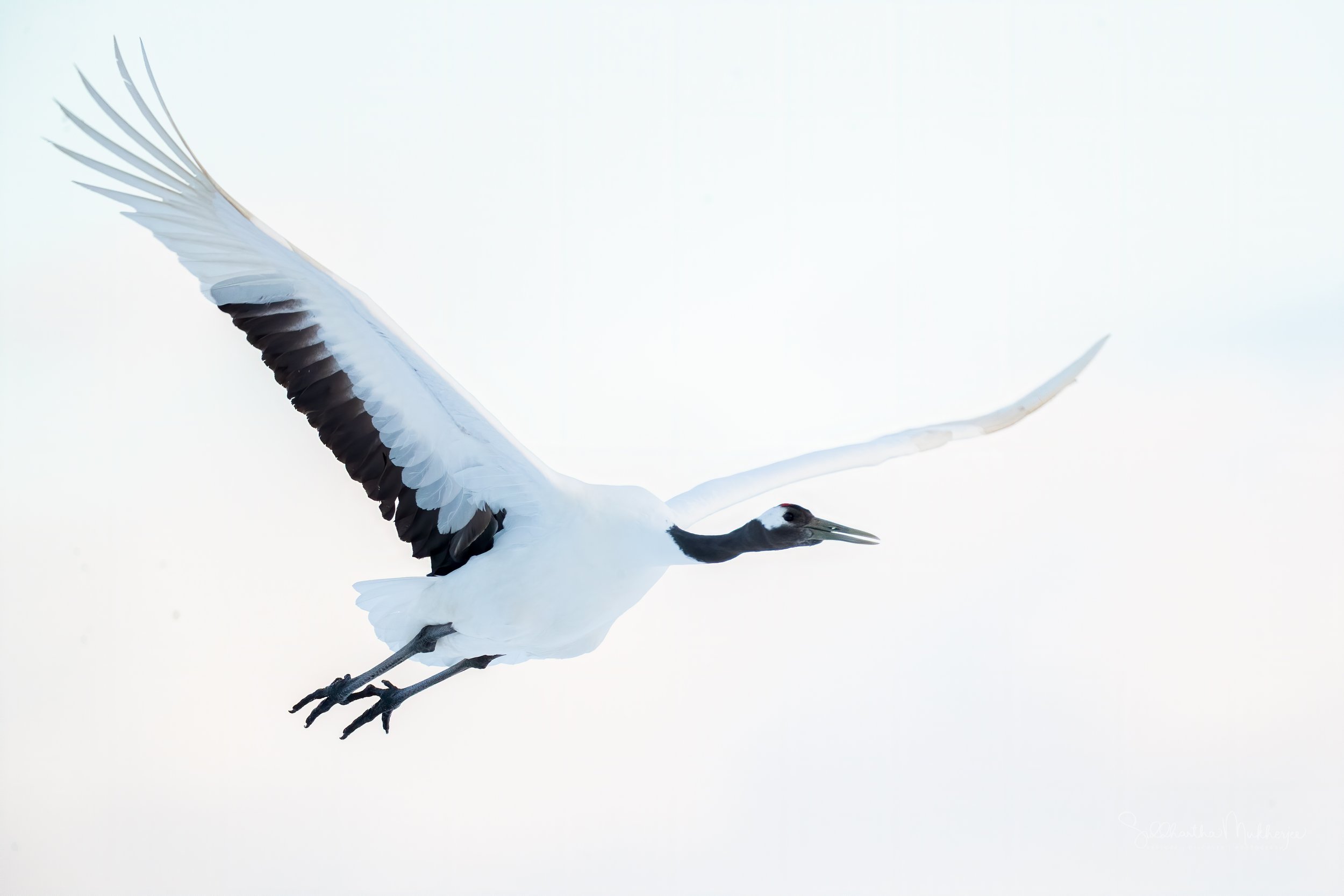
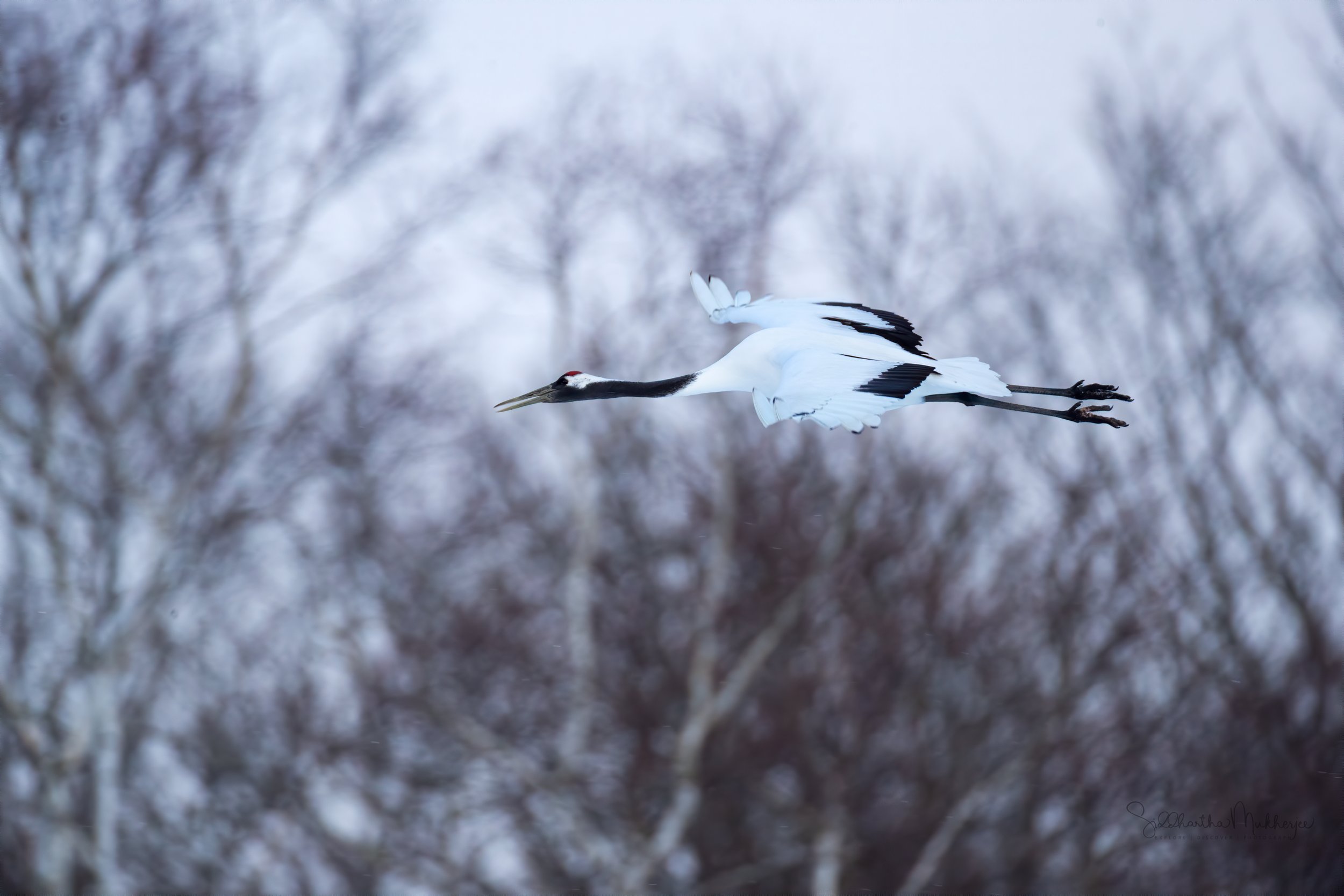
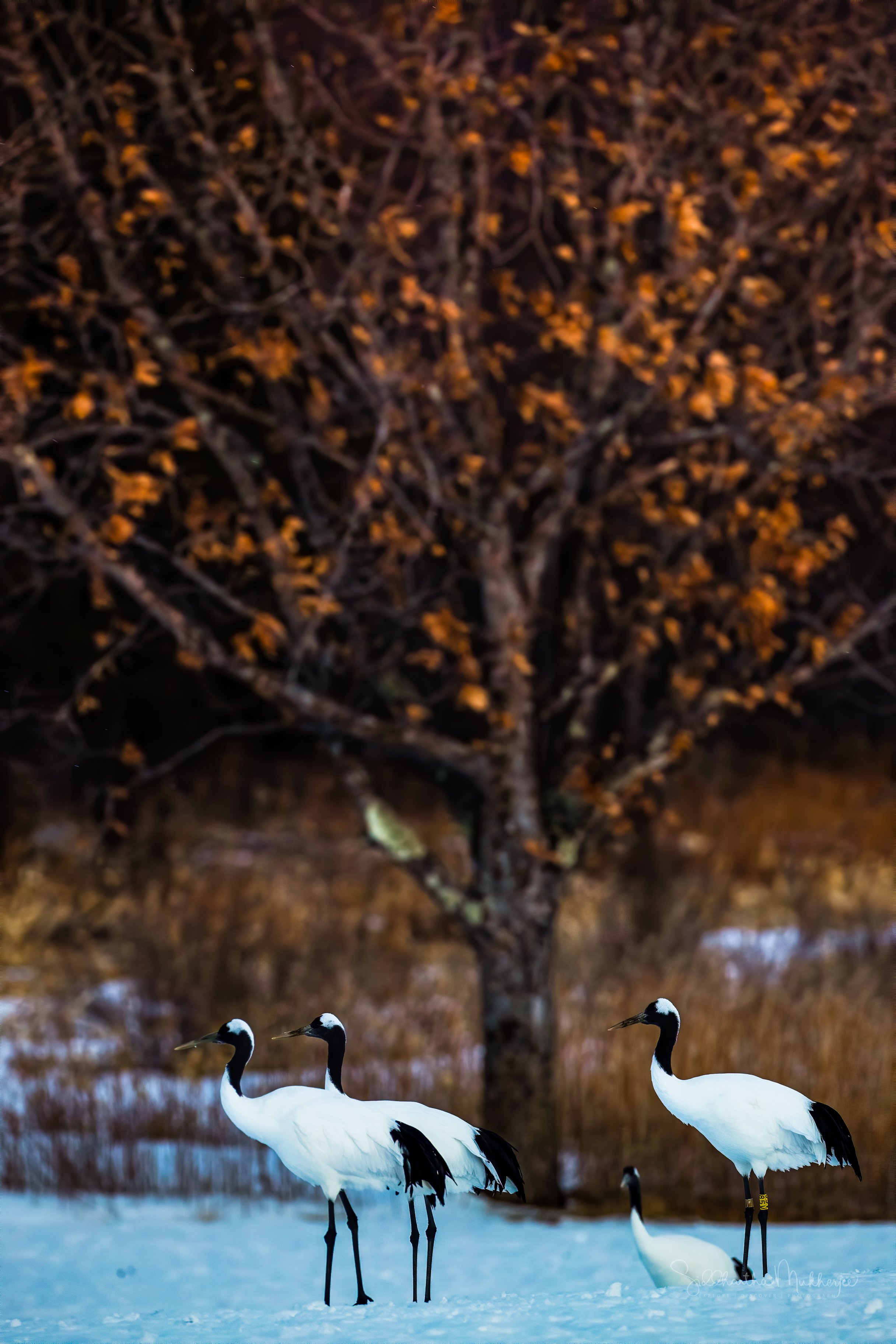
Related Posts





































